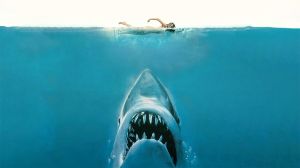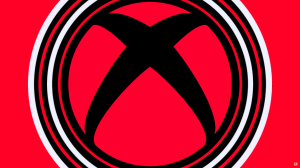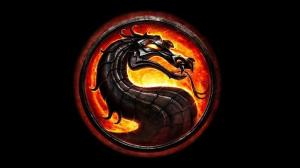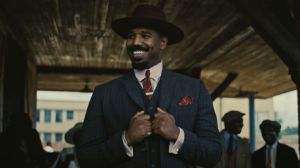
Solicitations for the upcoming relaunched X-Men titles have rolled out, and it seems like the world has turned on its head for Marvel’s Merry Mutants. Extraordinary X-Men reveals that the Terrigen Mists have been killing and sterilizing the mutant population. The All-New X-Men have taken off on a superhero road trip. Meanwhile, Magneto’s Uncanny X-Men are taking on…less savory jobs.
Videos by ComicBook.com
But massive shifts in status quo are pretty much the norm for the X-Men. Their history is full of drastic changes and twists of fate not unlike what All-New, All-Different Marvel looks to bring.
Let’s take a look back at some of the biggest status quo shifts in the X-Men’s history.
Giant-Size X-Men

If you want to talk about X-Men status quo changes, you have to go back to the beginning. No, not the first beginning. The second beginning.
Giant-Size X-Men #1 came out of nowhere. New X-Men stories hadn’t been printed in years, and GSX provided one unlike any other. The X-Men abandoned there sheltered, prep school kids with problems premise and introduced an entirely new, highly multicultural team of soap operatic superheroes.
The issue also relaunched a series that would become Marvel’s biggest success in close to a decade, transforming the X-Men from Stan Lee and Jack Kirby’s least successful creation into the flagship of Marvel’s entire line.
The Outback Era

The status quo that followed GSX continued under the pen of Chris Claremont and the pencils of all-star artists like John Byrne, Dave Cockrum, and Paul Smith for years. Then the Mutant Massacre happened, and things got dark.
The mutant massacre put mainstays Kitty Pryde and Nightcrawler out of commission. Storm was without her powers. Magneto was running the Xavier Institute. And then the X-Men died. Sort of.
With mutant hatred at its peak, and the Marauders looking to finish the job they started on the X-Men in the Morlock tunnels, Storm and the team decided the only option was to fake the entire team’s deaths, without even leaving a message behind for Kitty, Nightcrawler or any of their other loved ones.
The era that followed was hugely different. The X-Men operated out of a ghost town in Australia, teleporting about via the mutant Gateway. Kitty and Nightcrawler were replaced with Cyclops’ brother, Havok, Marvel UK character Psylocke, former pop star Dazzler, and Longshot, a non-mutant who had only appeared in his own miniseries. It was a bold new direction for the team, and one remembered fondly by fans.
The 90s Relaunch

Eventually, the X-Men revealed themselves to be alive once more. This led to 90s relaunch, with Jim Lee at the helm. Perhaps the most notable change of this era was that, after 17 years, Chris Claremont stepped down as series writer.
That wasn’t all though. The X-Men got a second ongoing series, and the team was split between Cyclops’ Blue Team and Storm’s Gold Team. The original X-Men returned to the fold, and the X-Factor they built was replaced by the government funded team led by Havok. The New Mutants, once the young mutant team, was transformed into X-Force, a paramilitary outfit led by time travelling mutant soldier Cable.
It was an era of X-cess (sorry) that lasted for about a decade.
New X-Men

Eventually the X-Men franchise collapsed under the weight of its own continuity, and its many, many pouches. In an attempt to make the team relevant again, Marvel hired visionary writer Grant Morrison to breathe new life into the team.
Morrison relaunched the series as New X-Men. He shifted focus onto the school, and the team consisted entirely of the core teaching staff. The colorful costumes were gone, replaced by black and yellow uniforms, and Xavier expanded his dream into a corporation called X-Corp.
Morrison also introduced the idea that some mutations weren’t as awesome as shooting force beams or controlling the weather. Sometimes you just ended up with three faces, and they were all ugly. He also turned the thematic focus of the book to evolution, and what it means to be the next step for humanity as it walks into the future.
Some purist complain that New X-Men didn’t feel like X-Men, but that was arguably the best part about it.
No More Mutants

Part of the New X-Men shift in status quo was that mutants were beginning to outnumber humans. They were the new cool. Marvel wanted to put that genie back in its bottle, and so they culled the mutant ranks with three magic words spoken by the Scarlet Witch in House of M: “No more mutants.”
Instantly, the mutant population was reduced to less than 200 (they were not, strictly speaking, decimated, despite what the post-event banner said). Now an endangered species, the remaining mutant population gathered at the Xavier Mansion, now “guarded” by sentinels. This status quo would only grow darker as the X-Men were eventually forced out of the country and onto their own island nation off the west coast.
Soon they realized that the population was not just reduced, it also wasn’t replenishing itself. No new mutant births had been record since M-Day. It was a dire time for mutants, and it only ended with the return of the “mutant messiah,” Hope Summers.
Schism and the All-New X-Men

The return of Hope Summers marked the beginning of another new era for mutants, but not one without its share of upheaval. Cyclops and Wolverine’s differences of philosophy finally led to a throwdown between the two. Wolverine left the island of Utopia to Cyclops, and built a new school – the Jean Grey School for Higher Learning – in Westchester, of which he became headmaster. During the Avengers vs. X-Men event, Utopia was destroyed. However, Hope Summers – possessed by the Phoenix Force, and with the help of the Scarlet Witch – restored mutants to the world.
What followed was a bright new era for mutants. New mutants were popping up across the globe, and being welcomed to Wolverine’s school. Meanwhile, Cyclops became the leader of a mutant revolution and hunted by SHIELD and the Avengers.
Then Beast did something unexpected. In an attempt to snap Cyclops out of what Beast believed to be denial, Hank ripped the original five X-Men from their own time and brought them into the present day, forcing them to confront their future fates. They are still stuck in this era still.
This is where the X-Men were when the final incursion happened, and the world as they knew it was destroyed. We’ll see how different their world is 8-months after Secret Wars when Extraordinary X-Men launches in October.









